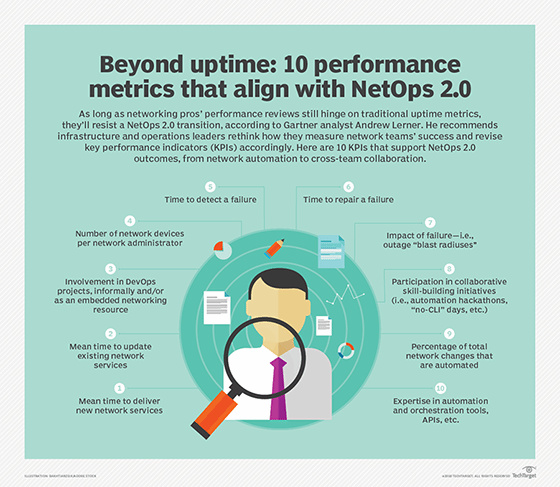10 metrics to drive a NetOps 2.0 culture shift
If an object at rest tends to stay at rest, how can IT leaders get the network moving at the speed of DevOps? Start with performance review metrics that reflect NetOps goals, experts suggest.

IT pros frequently cite the legacy network -- with its rigid change control processes and fragile, inflexible designs -- as a major obstacle blocking key DevOps initiatives, according to Gartner analysts Andrew Lerner, Joe Skorupa and Dennis Smith. To get around those limitations, the trio has called for a new kind of network that can better deliver business-critical applications and services at speed and at scale -- using automation, virtualization and other DevOps-inspired methods and tools.
"We are now slapping a term on this much-needed shift," Lerner wrote in a Gartner blog post, dubbing the move toward responsive, programmable and scalable networks NetOps 2.0 -- a concept also known as NetOps, DevNetOps, NetDevOps and Super-NetOps.
Networking still has a long way to go before NetOps 2.0 adoption is a given, however. A recent research note from Skorupa and Smith indicated enterprises currently automate less than 30% of network changes. To kick-start a meaningful culture shift, infrastructure and operations leaders need to adjust how they measure success, the analysts said.
Today, key performance indicators (KPIs) typically assess network managers' performance based on uptime, emphasizing infrastructural stability at the expense of flexibility and responsiveness -- both of which are increasingly important in digital business environments.
While uptime remains crucial, Lerner, Skorupa and Smith said they believe adjusting KPIs to align with emerging tools, processes and objectives -- shifting networking teams' focus from what (i.e., uptime) to why (i.e., business value) -- will help boost NetOps 2.0 adoption and enterprises' bottom lines.